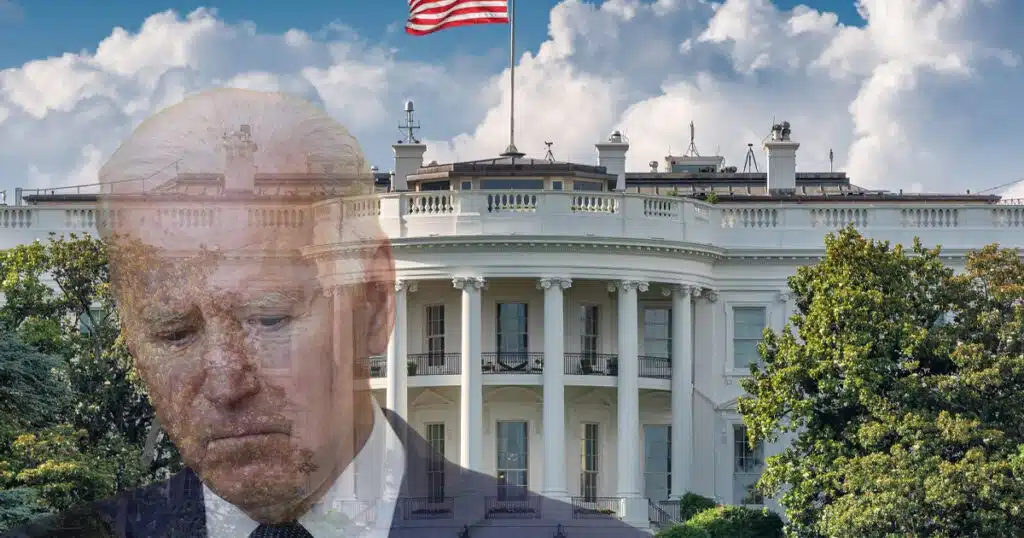
The National Debt Death Spiral Has Arrived
Unfortunately, over decades, the budget hawks in Congress cried wolf one too many times, and the people in government and on Wall Street started to ignore them. As far back as the 1980s, Walter Mondale, who was a classic tax and spend liberal, centered his entire 1984 campaign around the danger of rising deficit spending. It gained a little traction in the media, but Mondale still lost in an overwhelming landslide because people were generally prosperous, and no one really cared about the national debt.
In the 40 years since that election, notable outliers like Rand Paul have been talking about runaway deficits, but his warnings fell on deaf ears. In fact, when federal spending was elevated by about $600 billion during the pandemic, woke Democrats just assumed that was the new spending floor going forward, even after the pandemic receded. In essence, we now have persistent $6 trillion budgets with pandemic spending simply replaced with other leftist priorities.
The ugly truth is that in fiscal 2023, the deficit was $1.7 trillion and would have been $2 trillion except the Supreme Court blocked the $300 billion giveaway for student loan recipients who don’t want to pay the money back. The overall deficit stands at roughly $33.5 trillion with a bullet. Recent projections indicate the cost of financing the deficit will be over $1 trillion in 2023. In the next year, it’s likely that interest on the debt will surpass the budgets for defense and welfare.
The Market Speaks
The government’s October 12th Treasury Bond sale begs the question, what if the government held an auction and nobody came? The 30-year bond offering was so large and demand so weak, the primary dealers had to buy 18.2% of the total amount of debt the government was trying to peddle. This was the lowest investor interest in 30-year Treasuries since 2021.
The result was the yield reached 4.837% on the 30-year, the highest level since 2007. It’s important to recognize that this surge in rates had nothing to do with the Fed or the Fed Funds Rate, which has remained in the 5.25-5.50% range since July.
The reason for this lack of interest on the part of investors is fairly obvious and includes a number of formidable headwinds. The most important issue relates to a lack of confidence. Dwindling demand forces rates on bonds to accelerate, and in this case, it’s an indication that the market believes rates on the 30-year are heading upwards. So, why would anyone buy a bond that will be cheaper and provide a better yield next month or next year?
Negative investor sentiment is also tied to the belief that the government won’t stop frivolous spending, which will exacerbate an already critical situation. Current projections indicate that interest on the deficit will surpass Social Security as the number one budget expense by 2051, but others see it happening long before then.
Finally, the Fed is no longer a buyer of Treasuries, and in fact, they continue to unwind their positions. If the policy of quantitative easing (QE) is truly over, bond buyers can no longer assume the Fed will bail them out if the market collapses.
The Government’s Response
As usual, the government searched for a band aid approach to the problem of rising Treasury rates instead of addressing the root cause of the problem. Periodically, the Treasury provides refunding announcements, which in the past were largely irrelevant. These announcements give the market guidance as to the size and denomination of the bonds and notes the Treasury will offer at auction. On Wednesday, the department said it would sell $112 billion in medium and long-term securities in coming auctions. Although the overall size of the offering will increase, it was notable that the Treasury reduced the amount of 10 and 30-year bonds and notes by $1 billion from what was originally announced in August.
The stock market responded to the announcement with a rally, as yields on 10 and 30-year bonds fell, which meant prices rose. The yield on the 10-year fell to 4.987%, and the 30-year fell to 4.79%.
Financial Armageddon Without a Real Solution
Manipulation of auction releases and other tricks the Treasury might use will only delay the inevitable. Somehow, the government must finance its reckless spending and fiscal policy, and short of raising taxes on the middle class, that can only be done through two ways: selling Treasuries or printing money. If demand for Treasuries continues to wane, the government will enter a death spiral of ever larger auctions, plummeting demand and rates that continue to rise as a result. If you want to get a glimpse of what the future holds, take a moment to read this article on the Greek debt crisis.
The other alternative is that the Federal Reserve starts another round of QE, so they would once again be a buyer of Treasuries, driving down yields and raising prices, at least temporarily. However, as we now know, QE is ultimately highly inflationary, which is the exact thing Chair Powell is determined to conquer.
At some point, relatively soon I fear, it will be too late to stop the bond death spiral, and the U.S. will find itself in a sovereign debt crisis. If you want to really become unsettled, read about the austerity measures the citizens of Greece were forced to endure, particularly the confiscation of their money held in Greek banks.
Unfortunately, it appears Joe Biden no longer possesses the intellectual capacity to understand a problem of this complexity and magnitude, if he ever did. Certainly, those on the receiving end of his free money giveaways don’t understand it, and they could care less anyway as long as they keep getting their free stuff.
What a damn mess these leftist lunatics and RINO Republicans have gotten us into.



